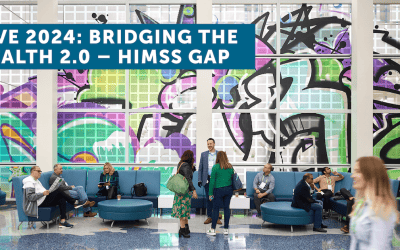Generative AI everywhere. First, as was expected, the hype machine for generative AI is now alive and well in healthcare. From ambient AI applications to use cases focused on summarizing medical notes and other documentation from clinical/administrative contexts, it felt like everyone has some form of chatGPT offering in the works.
Epic and Nuance took center stage in the context of HIMSS, and they certainly had some impressive demos on display. But I repeat, these are demos (slideware?) and the jury is still out on how they perform in the real world—put frankly, are they even ready to go live? Some of the use cases that were discussed included embedding GPT4 in Epic’s physician-patient messaging and the SlicerDicer analytics tool. Tools for addressing the administrative load of clinicians are critically important for addressing burnout right now, but one wonders what responsible AI protocols have been put into place before rolling this out.
We are doing substantial research in this area and are curious as to how deep the commitment to responsible AI is in practice across the board. OpenAI has had some problematic privacy concerns come to light, and it begs the question of whether it’s an appropriate asset to even consider using in a healthcare context. The performance metrics of these models over time and error rates will be important to watch – areas in which we received little insight on from the demos at HIMSS.
While Open AI’s interest is in having an arms race in this space, my money is on the vendors who have intentions to introduce products in a more thoughtful manner. Some may even choose not to enter the market until a later time or will perhaps work with smaller large language models (LLMs) that pay much more attention to the data they curate, privacy/security and data governance as well controls for managing misinformation/disinformation that the models produce. Ricoh Document Scanner was a nifty example of how the use of optical scanning of faxes with a generative AI textual summary service on top could play a role in smaller medical practices.
Note: I’m not using the term “hallucination” because AI models are not sentient beings and cannot hallucinate. The anthropomorphizing of AI needs to stop. They lack agentic capacity and we need to not buy into the hype if we are going to engage with the technology in a fruitful, ethical manner. In the lead up to HIMSS I wrote a bit about some of these concerns on our blog.
Health equity: marketing slogan or real, material ‘thing’? Earlier in the month, ViVE made a big splash around their “techquity” coalition. Given that a significant portion of my career has revolved around fairness and ethical development in technology, I’ve learned firsthand that one always needs to be skeptical of these pronouncements of tech solving broader social problems through slogans and PR campaigns. It is one thing to make pronouncements at conferences; it’s almost a sure thing that we’ll return a year later with little accomplished unless there are real incentives to change business practices.
The issue of technological solutionism has been discussed and critiqued for over a decade now and should inform how we go about addressing health equity in society and its relationship with technology. I spoke to a number of vendors who seemed to agree that most of the talk about health equity in the health IT space seems to be more marketing and aspirational, rather than involving clearly defined programs and technologies applied with demonstrated results. I tend to agree; I think more care needs to be given to how we strategize around social determinants of health and the health policies/politics that can contribute to a healthier population.
That said, there are some areas where we’ve seen the appropriate application of AI around social determinants and health equity issues that hold promise for making an impact. Often the key challenges for a tech company is finding a business model that can sustain the company long enough to create lasting change. Doing good is hard to do in practice given the incentives that drive company engagement with these issues.
Jvion, acquired last year and now pretty solidly integrated into Lightbeam Health Solution’s offerings, will be one to watch. During the first year of COVID, Jvion did some impressive vulnerability mapping of neighborhoods who were at higher risk of COVID due to social determinants. This is important for any population health approach and will continue to add value in the post-COVID context. I hope to have some follow on calls with companies such as Health Catalyst with whom I met and who were excited about some data they have on real impact in this space. This is what we need more of – real world data on actual impact on health equity and social determinants-related outcomes.




0 Comments